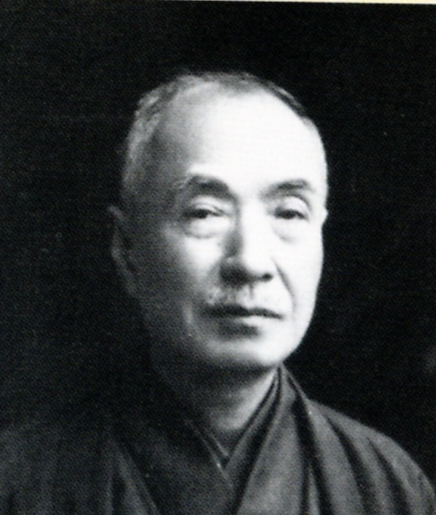- Kyoshi Takahama
Infobox Writer
name = Kyoshi Takahama

caption = Kyoshi Takahama
birthdate = birth date|1874|2|22|df=y
birthplace = Matsuyama,Japan
deathdate = death date and age|1959|4|8|1874|2|22|df=y
deathplace =Kamakura, Kanagawa ,Japan
occupation = writer
genre = "haiku " poetry, literary criticism, short stories
movement =
notableworks =
influences =Masaoka Shiki
influenced =Hoshino Tatsuko nihongo|Kyoshi Takahama|高浜 虚子|Takahama Kyoshi|extra=22 February 1874 –8 April 1959 was aJapanese poet active inShōwa period Japan . His real name was Kiyoshi; Kyoshi was apen name . He was one of the closest disciples ofMasaoka Shiki .Early life
Takahama was born in what is now the city of Matsuyama,
Ehime Prefecture ; his father, Ikeuchi Masatada, was a formersamurai . At age nine he inherited from his grandmother's family, and took her surname of Takahama. He became acquainted with Masaoka Shiki via a classmate (Kawahigashi Hekigoto ), and it was Masaoka Shiki who gave him the pen-name of Kyoshi.Ignoring Masaoka's advice, he quit school in 1894, and went to
Tokyo to studyEdo period Japanese literature . In 1895, he enrolled in the Tokyo Senmon Gakko (present-dayWaseda University ), but soon left the university for a job as an editor andliterary critic ism for theliterary magazine "Nihonjin". While working, he also submitted variants on "haiku " poetry, experimenting with irregular numbers of syllables. He married in 1897.Literary career
In 1898, Takahama came to manage the "haiku" magazine "
Hototogisu ," which had been previously edited by Masaoka Shiki, and moved the headquarters of the magazine from Matsuyama to Tokyo. In "Hototogisu", he kept with the traditional style of "haiku", as opposed to the new trend having been developed in theHekigo school . Takahama attached importance to the symbolic function of the "kigo" (season word), and he tried to exclude the more modern trend towards season-less "haiku" completely. While editing "Hototogisu", he also expanded its scope to include "waka poems" and prose, so that it became a general literary magazine. This was whereNatsume Sōseki 's "Wagahai wa Neko de aru" ("I Am a Cat ") was first published, and Takahama contributed his own verses and short stories. These stories were collected into an anthology "Keito" ("Cockscomb", 1908), with a foreword by Natsume Sōseki, who described the contents as "leisurely tales".In 1908, Takahama began a full length novel, "Haikaishi" ("The Haiku Master"), which appeared in newspapers in serialized form. This was followed by "Bonjin" ("An Ordinary Person", 1909), and "Chōsen" ("Korea", 1912).
After 1912, he renewed his interest in "haiku", and published a commentary on "haiku" composition, "Susumubeki haiku no michi" ("The Path Haiku Ought to Take", 1915-1917). However, he continued to write short stories, edit "Hototogisu", and wrote another novel, "Futatsu Kaki" ("Two Persimmons", 1915). In addition, he began to show an interest in traditional
Noh theatre, writing some new plays himself.Takahama wrote 40,000 to 50,000 "haiku" in his lifetime, which appeared in anthologies such as "Kyoshi Kushu" and "Gohyaku Ku". His major postwar novel was "Niji" ("Rainbow", 1947).
In 1954, he was awarded the
Order of Culture by theJapanese government . As editor of "Hototogisu", Takahama was instrumental in bringing many new writers and poets into the literary world, includingMizuhara Shuoshi ,Yamaguchi Seishi andTakano Suju . He also encouraged his second daughterHoshino Tatsuko to publish her own "haiku" magazine, "Tamamo".Takahama moved to Kamakura in 1910 for his children's health and a fresh start for himself, and lived there for nearly 50 years until his death. His grave is at the temple of
Jufuku-ji in Kamakura. He was posthumously awarded theOrder of the Sacred Treasure , 1st class, by the Japanese government.ee also
*
Japanese literature
*List of Japanese authors External links
* [http://www.city.kamakura.kanagawa.jp/english/bunjin/takahama_e.htm Literary Figures of Kamakura]
* [http://www.lib.ehime-u.ac.jp/KUHI/ENG/kyoshi1eng.html Ehime Prefectural Library Site]
* [http://www.kyoshi.or.jp/ Takahama Kyoshi Memorial Museum in Ashiya]
Wikimedia Foundation. 2010.
